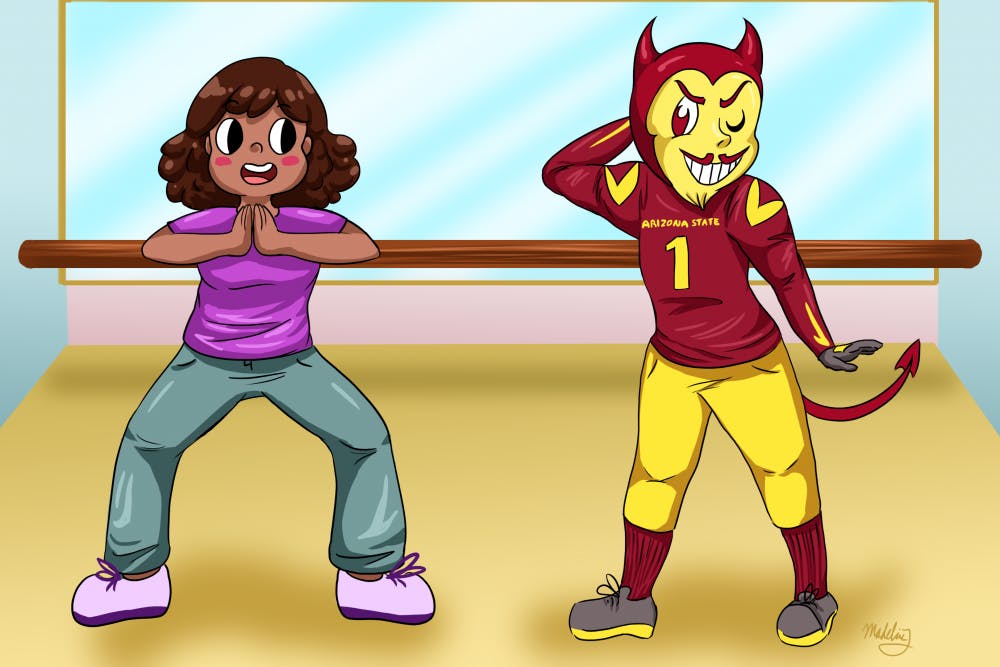ASU is taking the initiative to help its Native American students with the transition from high school life to campus life at a larger university.
According to ASU Now, Native American students make up less than one percent of college students.
One of the ways in which ASU guides Native American students into the newfound college life is by hosting the Tribal Nations Tour and the RECHARGE conference at ASU’s West campus.
Victor Begay, an academic community liaison director, said he helps ASU with native community outreach.
“(RECHARGE) is an initiative designed to increase the number of native students attending ASU,” he said. “The larger picture is to definitely increase the number of native students moving from high school to higher education in general.”
Begay said the conference has been held annually since 2013, and the theme shifts depending on what is pertinent to the native communities at the time.
At the conference, the students are broken up into groups according to grade levels ranging from seventh grade to seniors in high school. Each group participates in workshops relevant to their grade.
“The workshops are diverse,” he said. “They go all the way from college planning to financial aid discussions to the admissions process.”
Begay said some workshops are more for the older high school students, and the younger students have workshops that focus more on self-advocacy and beginning their careers toward higher education.
“There are a couple of workshops that combine cultural attributes with academic success, physical fitness, the importance of the mind, body and spirit: the trifecta in terms of academic success,” he said.
Begay said the conference typically ends with a talking circle, so the students get the opportunity to talk about what they experienced in the last few hours.
Victor Begay said both the RECHARGE conference and the ASU Tribal Nations Tour have been successful in increasing the number of students going into higher education, not just ASU specifically.
“I think these programs have been successful because they have begun to influence the way native high school students think about their future and what they are going to do once they graduate high school,” he said.
Annabell Bowen, the director of American Indian initiatives at ASU, works on aligning different departments at ASU to support American Indian students and engage native communities.
Bowen said her office does off campus work alongside RECHARGE with programs such as the ASU Tribal Nations Tour.
“It’s a program where we go out to tribal communities,” he said. “We have visited the 22 tribes here within the state. (We take) ASU to these communities, make ASU visible to these communities, provide the college access and information to them to get them to start thinking about college.”
Bowen said the ASU athletics department lends a hand with health and wellness camps and visits to these tribal communities.
“I think it’s beneficial to provide opportunities and provide persistence and hope for American Indian students to see themselves in a campus environment in college,” she said.
Klain Benally, a sophomore majoring in American Indian studies, attended RECHARGE his freshman year of high school.
Benally said he forgot exactly how the day went, but he remembered the keynote speaker, Jared Massey.
Benally also said the speech was about how Massey had attempted suicide at a young age but found his way through higher education.
“(Massey) mentioned to always give back to your community for what they have done for you,” he said.
Benally said he went back to his high school after that conference and talked to a counselor about restarting the youth council.
“Since I graduated high school, I gained experiences of starting up an organization and having the honor to serve as the male representative of Johnson O’Malley for the Native American youth in my district of 12 high schools,” he said.
Reach the reporter at anbuechl@asu.edu or follow @alexa_buechler on Twitter.
Like The State Press on Facebook and follow @statepress on Twitter.




